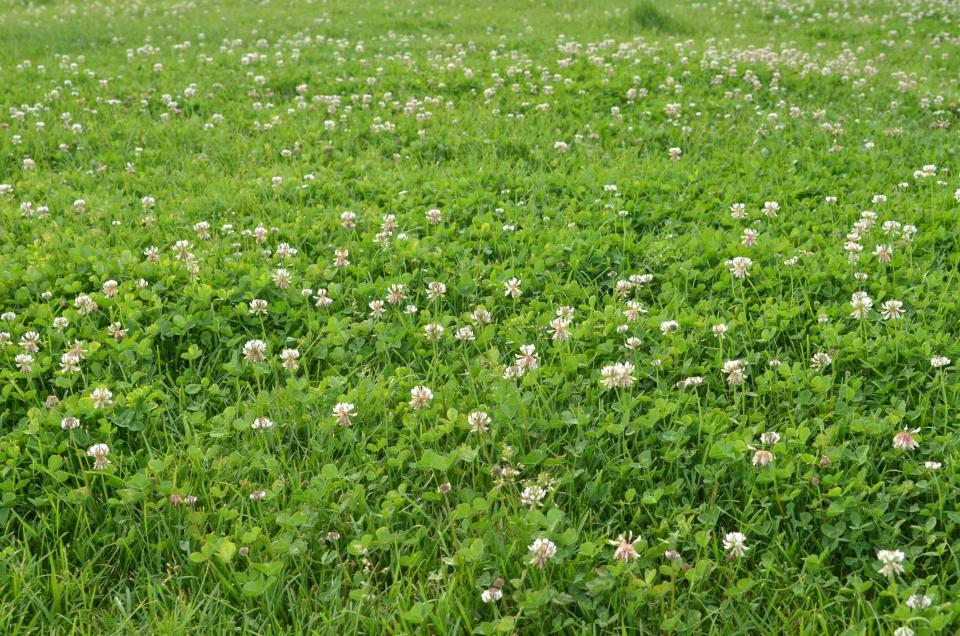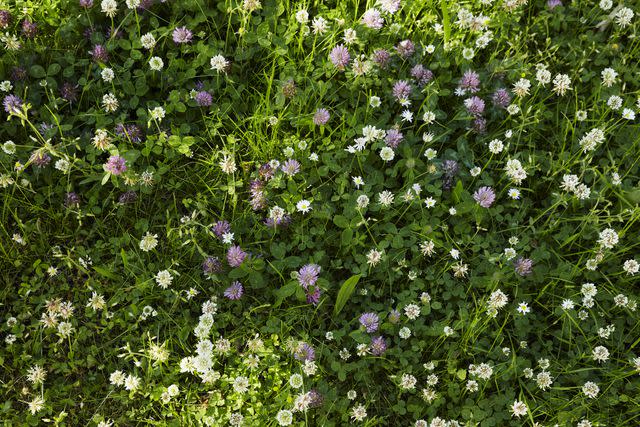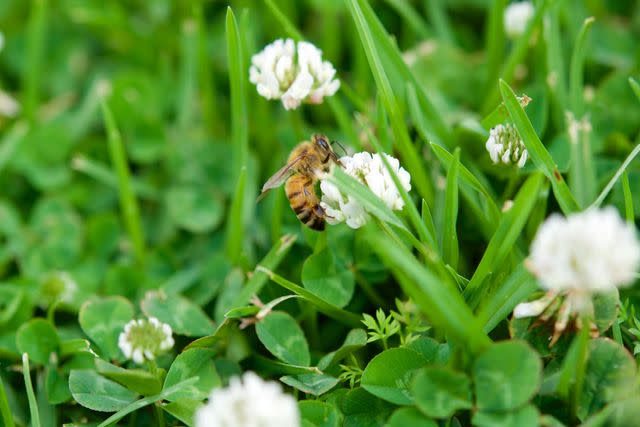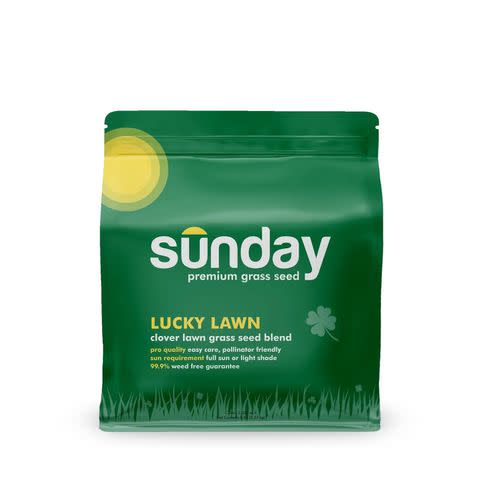Why So Many People Are Switching Their Lawns to a Clover Lawn
Dotdash Meredith and Yahoo Inc. may earn commission or revenue on some items through the links below.
Encourage natural growth and attract pollinators with a clover lawn

photon64 / Getty Images
Recently, people have been exploring new ways to grow and cultivate their backyards, often with their local ecosystem in mind. As a result, we’ve seen a rise in meadowscapes and other options that attract pollinators, and one great new suggestion is a clover lawn rather than a grass lawn.
Because we were curious how clover lawns work—and how best to begin growing one—we turned to an expert to get her thoughts.
Meet the Expert
Paige Boyle is a PhD Candidate and science expert at Sunday Lawn Care.
Before deciding if a clover lawn is right for you, it’s key to know what, exactly, a clover lawn is. According to Paige Boyle of Sunday Lawn Care, there are actually two types of clover lawn options. The first is a clover-only lawn, and the second is a lawn that’s made up of clover and grass.
While clover lawns might feel like they’re suddenly taking off, Boyle says that mixed clover and grass actually used to be the norm.
“Clover was included in many grass seed mixtures to provide nitrogen to the grass,” she says. Unfortunately, once herbicides became more prevalent, a lot of homeowners shifted to grass-only lawns. Luckily, people are realizing there are benefits to incorporating clover.
“Now that homeowners and turfgrass managers are becoming more environmentally conscious, clovers are coming back to the lawns," Boyle says.

Johner Images / Getty
Why Clover Lawns are Great for Pollinators
Whether you go with an all-clover lawn or a mix of clover and grass, Boyle says clover lawns provide pollinator food and a natural source of nitrogen to a lawn. Clovers are legumes, which, according to Boyle, means they have roots that convert nitrogen from the air into a form that can be used by plants. Ultimately, this can result in a reduction of fertilizer use—and the flowers are great food providers for pollinators.
However, while you can reduce your fertilizer use, don’t stop it entirely. If your goal is to do a mix of clover and grass, then you’ll have to add some fertilizer occasionally.
“It’s still a good idea to provide low amounts of nitrogen to keep the grass healthy and prevent the clover from taking over completely,” Boyle says.
Elevate the Look of Your Lawn
According to Boyle, a huge perk of clover is that it can often fill in patchy areas where traditional grass struggles, such as shady zones.
Plus, it also serves as a great pop of color and can create more texture and interest in your lawn, especially if you use a few different varieties. Boyle says that white or mini clovers can give creamy white with pink accents, while strawberry clover is great for adding pink flowers.

Searsie / Getty Images
Cons to Know
Before you run out and make a huge change to your whole yard, Boyle had a few words of warning. The first downside is that clover isn’t as traffic-tolerant as regular grass, meaning you might want to keep your clover lawn in a low-traffic area.
However, Boyle also adds, “Mixed clover and grass lawns are great if you’re just getting started with flowering lawns and want to see if you like the look and low-maintenance feel.”
Of course, if your yard sees a lot of play or other traffic, a traditional, grass-only lawn might be your best bet. But Boyle says the same is true if anyone in your family has bee allergies or aversions because clover lawns are huge bee attractors.
It’s also important to note if your HOA or local municipal bylaws have limitations on what you can grow, says Boyle. Unfortunately, this might rule out a clover lawn.
How to Incorporate Clover Into an Existing Lawn
Prepare your lawn before seeding
If you’re adding clover to an existing lawn, then Boyle says the first step is to prepare your lawn, as this will only increase the success of your clover seed germinating.
“Cut your lawn a little lower than normal and remove the clippings,” Boyle says. “This will help ensure the clover seed gets all the way down to the soil, increasing your chance of success.”
Select the best seed type
If you’re simply looking to add clover to your grass lawn, Boyle says this is pretty straightforward. For a warm-season lawn, which Boyle says are grasses like bermudagrass or zoysiagrass, then you can simply add pure clover seed.
Similarly, if you have a cool-season lawn, which Boyle explains are things like tall and fine fescues, Kentucky bluegrass, or perennial ryegrass, then you can add a clover-only seed or a clover and cool-season grass seed mix. Either process can be done in fall, which is preferable, or early spring, which Boyle assures us is good, too.
Lucky Lawn Grass Seed

Sunday
Temporarily increase watering
Like any new lawn, an increased water cycle is a must, at least at first. Boyle suggests watering one to two times a day to start, but then once you see enough growth, you can go back to your regularly scheduled deep and less frequent watering.
Weed carefully—or not at all
If you’re adding clover in to fill in spots where your grass isn’t thriving, Boyle suggests letting other so-called ‘weeds’ grow, too.
“Embrace other flowering plants,” she says. “Not all weeds are bad, and if we are growing clover, why not let a few other plants in for some added diversity and pollinator support?”
But if you do want to weed, Boyle says be careful. “Be sure to hand pull or carefully spot treat those weeds individually, since any broadleaf weed killer you use could also damage your clover,” she says. And, if you need something heavy-duty, make sure you protect pollinators. You can do this by mowing off any existing flowers ahead of spraying herbicides.
Maintain as needed
If you plant your clover lawn and find it’s not exactly thriving, don’t be disheartened. Boyle says you can oversee as needed to keep clover present and lush.
"It may thin over time, particularly if there is a lot of traffic or competition from the surrounding grass,” she says.
Read Next: What Do Lawn Fertilizer Numbers Mean?

